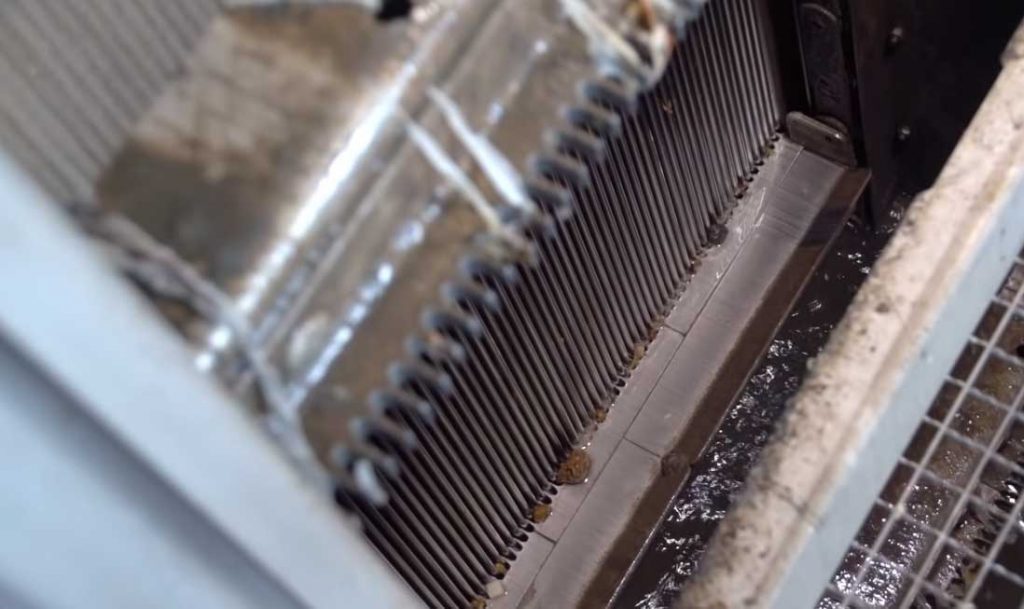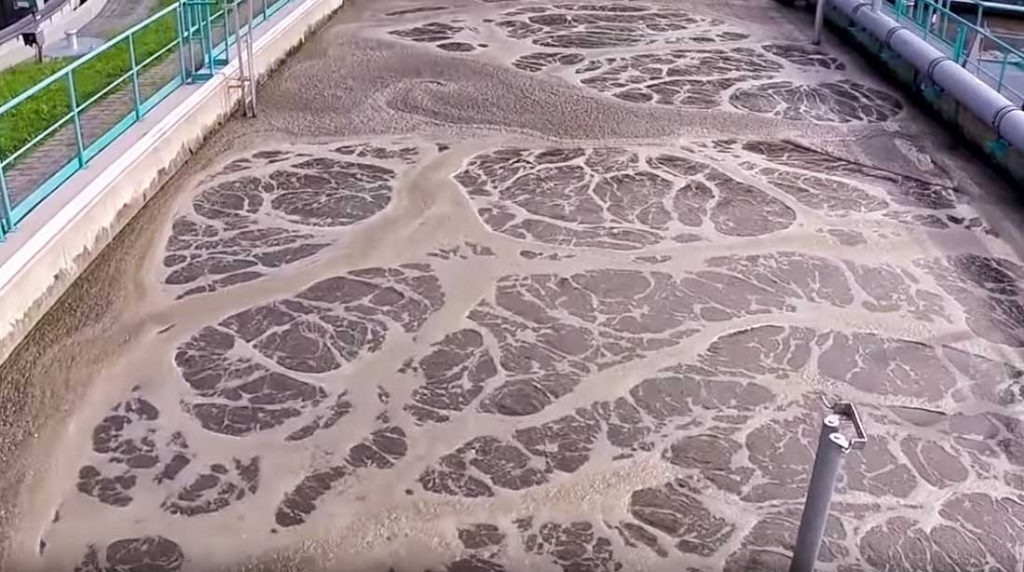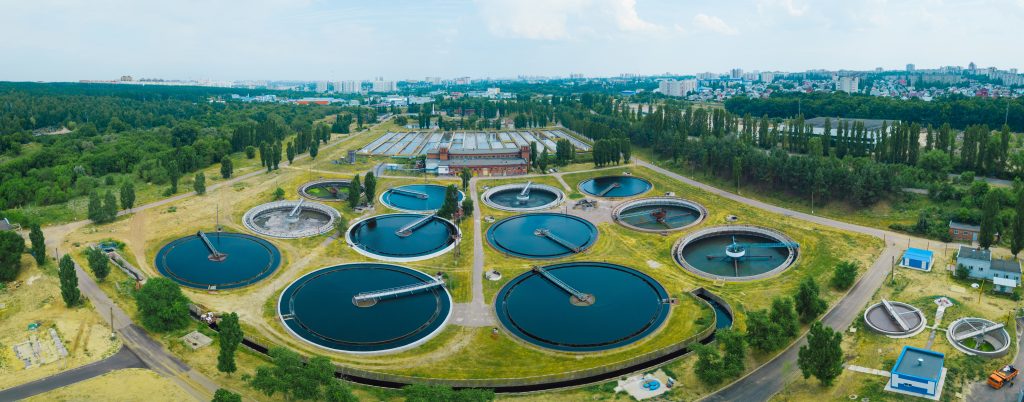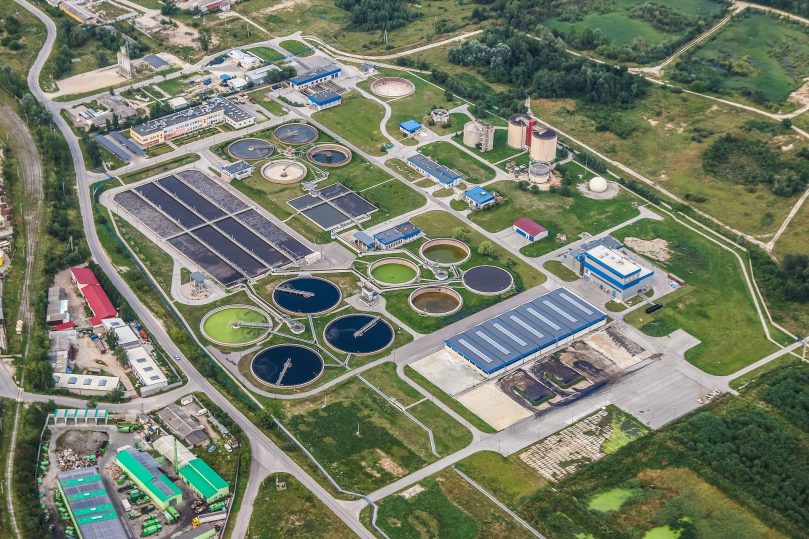Each person uses an average of 120 litres of water per day. This is used for a wide variety of purposes (body cleansing, cooking, flushing toilets, etc.). But what actually happens to the dirty water / waste water when it leaves our area of application?
Waste water is drained through pipe systems and thus enters the public sewerage system. Here we differentiate between two types of drainage. In the combined sewer system, domestic and commercial wastewater is fed into a sewer together with rainwater that accumulates on sealed surfaces (e.g. streets and roofs).
The separate sewer system divides the media. Dirty water is fed into one sewer, surface water into another. Because of the low dirt load, the collected surface water is usually discharged into neighbouring waters (lakes or rivers).
The wastewater and the combined sewer both end up at the treatment plant. Of course, in the case of combined sewer systems, the sewage treatment plant has more work to do, as all the surface water has to be cleaned as well.
Step by step back to nature

Now the actual cleaning process begins. First of all, the rough stuff has to come out. Rakes filter everything that is not permeable as solid matter in the wastewater. This can be toilet paper, wet wipes, but also a toothbrush or other things that do not belong in a toilet. This process is called pretreatment.
After rakes comes a sand filter basin throug flow equalization. Here the wastewater is settled and through sedimentation sand, glass splinters and smaller solids sink to the bottom.
The primary clarifier then has the function of filtering further components from the waste water. Suspended solids, which are lighter than water, such as plastic parts but also oils and fats, float up and are removed at the surface. Due to the very low speed in the basin, further heavier particles sink to the bottom.
Helpfull bacteria
Afterwards biology is helpful. In the actual clarifier, bacteria and fungi have the task of metabolising organic components in the wastewater into its individual parts. This process is called Biological nutrient removal. Oxygen-rich and oxygen-poor areas provide optimal conditions for breaking down all carbon and phosphate compounds and urea from the urine.

The secondary clarifier is used again for sedimentation. Here, bacterial flakes and other components that have no place in clean water sink to the bottom of the tank. In the end, the clarified water is returned to the natural water cycle, usually lakes or streams.
Very modern sewage treatment plants have additional treatment stages for further phosphorus elimination or the killing of pathogens.
Bacterial flakes and sludge are processed into gas in digestion towers and in many cases are used to supply the sewage plant with energy.



Thanks for mentioning that both domestic and commercial wastewater end up at a treatment facility. The sewage company my brother works for is thinking of getting a frac aeration system to aid the treatment process of water to make it cleaner before getting treated and back into the municipal system. It seems like a good idea to consider hiring a reputable company that has high-quality equipment to treat wastewater as effectively as possible.
Thank you very much for your comment. We already offer something similar for sewage treatment plants, often in the agricultural sector. For example, we offer so-called submersible aerators, which aerate the waste water in a septic tank. The submersible aerators of the oxyperl range are especially powerful units for mixing and aeration of sewage in the activated sludge process. In modern small sewage treatment plants the SBR (sequenting batch reactor) with submerged aerators are state of the art. Here you find more information about that. https://www.jung-pumpen.com/products/waste-water/small-wastewater-treatment-technology.html
Wow, I thought it was interesting when you explained that fungi and bacteria have the job of breaking down organic components that are found in wastewater. It’s cool to think that the things we find in nature can work to recycle the water that we use. It’s important to have waste treatment plants otherwise we would run out.
It was interesting to learn about the sludge process which is a biological process where it is broken down with natural occurring micro-organisms. My dad really wants to ensure that he can have better wastewater treatment so that he can be more environmentally friendly. Getting some help from a professional to ensure safety for their design.
Thank you so much for this detailed info you shared & natural really plays an important part in everyone life.
Great post.